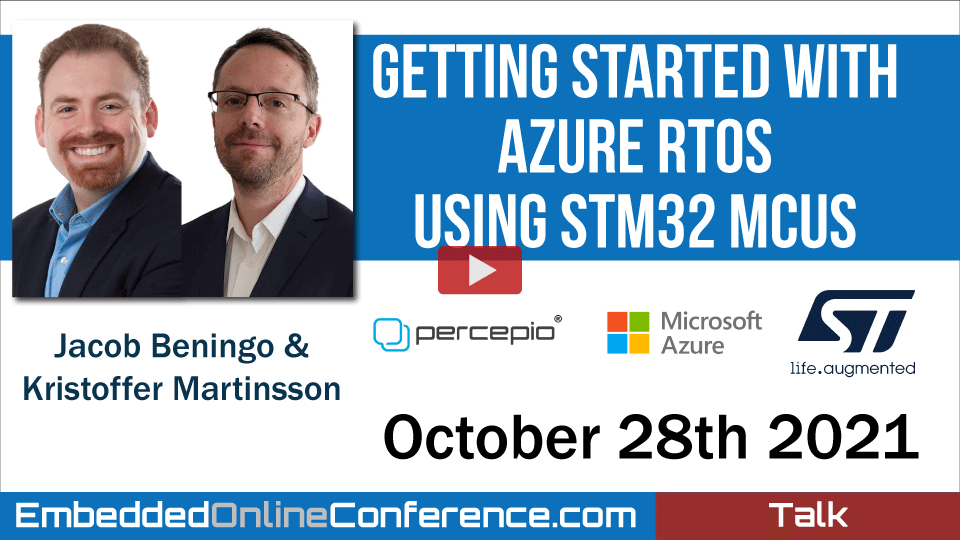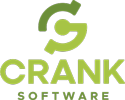Home > On-Demand Archives > Talks >
Getting Started with Azure RTOS Using STM32 MCUs
Jacob Beningo - Kristoffer Martinsson - Percepio - Watch Now - EOC 2021 - Duration: 01:00:20

IoT Edge devices need a robust, secure, real-time operating system that simplifies connecting to the cloud. In this webinar, attendees will learn how to leverage Azure RTOS to securely connect to Azure Cloud and view hands-on demonstrations using the STM32L4 Discovery board.
Join us to gain an understanding of:
- Real-time Operating Systems (RTOS)
- Azure RTOS
- Deploying Azure RTOS to the STM32
- Connecting an embedded system to Azure Cloud
- Tracing RTOS applications using Percepio Tracealyzer
The title "Getting Started with Azure RTOS Using STM32 MCUs" led me to expect a step-by-step setup of a "hello world" task in Azure/ThreadX.
Rather I was quite disappointed. There was not a single line of code in this presentation! The first part was about connecting a pre-made IOT application to the cloud. The second part was a product presentation. Neither "IOT" nor that product were even mentioned in the description of the webinar.
I'm sorry it did not meet your expectations. I believe we covered everything we described plus more, but perhaps we could be more clear in the future.
Whenever I first work with something, I leverage a pre-made example. I liked the Microsoft version because it gave all attendees an easy, fool-proof setup method. The code to get started is also fairly straightforward.
Honestly, I would have liked another 10 - 15 minutes to show everyone how to modify the example. I may look at creating a video I will post to YouTube that can do just that.
I also appreciate the feedback. We're very focused on trying to provide high quality content for engineers, so if we missed the mark, I want to know so that we can improve it for next time.
Terrific stuff in just one hour!
Jacob, I have 2 questions for you:
- Do Safety and Security pre-certifications are redone for every updated release of Azure RTOS?
- What do you think about hardware-based RTOS (HW-RTOS by Renesas), what are its advantages and disadvantages compared to software-based RTOS?
Thank you very much,
-Krish Rao
Thanks for the questions:
- My understanding is that they are done with each release.
- HW-RTOS is interesting. It offers the opportunity for very efficient operation and alleviating the CPU from running the RTOS. A few disadvantages are that it's really only saving maybe 1% CPU with a modern RTOS. Also, if there is a security flaw in the hardware, now I can exploit that flaw to attack the system and the hardware needs to be changed, not.a simple software patch.
It's very interesting though. I've personally not tried it yet, but it's on my list.
Thank-you for the questions!
There are also a few additional resources to consider after watching this webinar. ST Microelectronics has two virtual workshops on Azure RTOS that will be coming up on October 28th and November 5th, 2021.
Details can be found at the following link:
Here is the link to ST Azure RTOS virtual workshops.
https://www.st.com/content/st_com/en/about/events/events.html/azure-rtos-workshops-ame-2021.html

























Since sleep modes are a really important thing for power saving, does Azure RTOS on the STM32x do it more efficient or the same as FreeRTOS , or support it at the same level as bare metal setup?